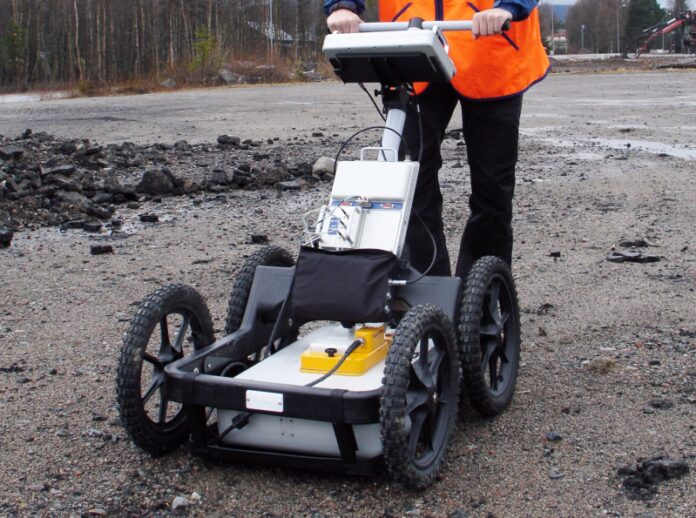Ground Penetrating Radar (GPR) is an electromagnetic technique that can detect changes in the subsurface without disturbing the surface. It works at a low frequency and can reach depths of 30 to 40 meters. The process is non-destructive, safe, and accurate. It can identify metallic and non-metallic objects, voids, and other structures. It can also be used to detect excavations, back-filled areas, and other ground disturbances.
GPR is most effective in favorable conditions, such as sandy soils, which allow the transmission of the radar pulse. It is unique in its ability to detect small objects and determine their depths. However, it has limitations when used in less-than-ideal conditions. In particular, fine-grained sediments can scatter the radar signal, which limits its depth penetration.
The total round-trip time between the antenna and the subsurface feature is important for determining how far the radar can penetrate. This time is dependent on the amount of scattering and EM energy that is released from the target. The amount of scattering depends on the water content of the subsurface and the concentration of free ions in the soil. Additionally, heavy vegetation, water on the surface of the ground, and other factors can affect the EM wave.
GPR equipment consists of a transmitter and receiver antenna and a radar control unit. The control unit synchronizes the signals, controls the transmitter and samples the receiver, and transmits the signals to a recording or display device. The resulting images are then processed and interpreted.
Ground Penetrating Radar is an effective and versatile tool for detecting metallic objects. It works best when targets are made of high contrast, such as metallic materials. The versatility of this technique makes it an invaluable tool for a wide variety of practices. In addition to its effectiveness for detecting underground structures, it can also be used for archeological research.
GPR works by sending high-frequency electromagnetic waves through the subsurface. These waves then reflect back to the receiving antenna. This process allows GPR to detect changes in the EM properties of the materials. EM properties vary according to the type of soil or rock material, bulk density, and water content. An antenna is placed on the ground surface, and the signals are reflected off the boundary where there is a difference in EM property.
GPR can penetrate up to 100 feet in some cases. However, its depth is limited by the conductivity of the material. High-conductivity materials such as granite and limestone will not absorb the waves as quickly as lower-conductivity materials do. However, the depth of GPR penetration can be determined using the information gathered by GPR.
GPR is an effective tool for mapping underground utilities and locating materials inside concrete. The technology has many applications in engineering and construction. It can also be used for structural assessment. For example, it can determine the level of degradation of concrete in a structure, enabling remediation efforts.



